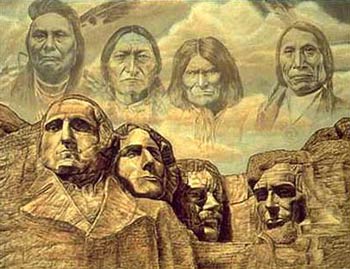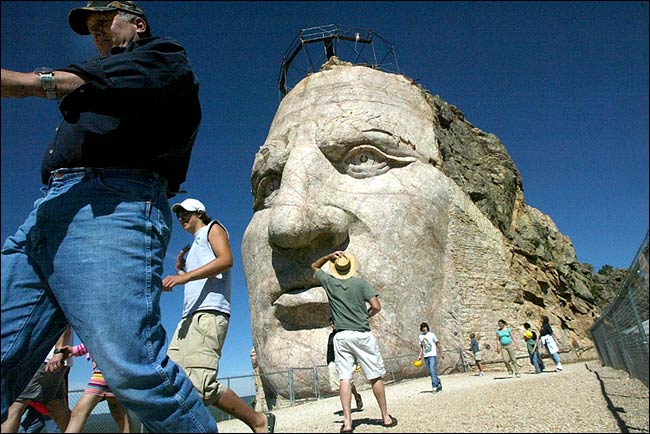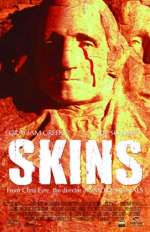[Spoiler alert]
Finally, we come to the climax of
National Treasure: Book of Secrets: the discovery of
Cibola, the lost city of gold. It's basically a central plaza of pyramids and temples from a Classic Maya city. It's hidden in an immense underground cavern near Mt. Rushmore. The buildings are made of solid gold. (I suppose they could be gold-plated, but solid gold is implied.)
This is stupid in so many ways that I can barely describe them. But I'll try.
The faux Cibola contains more gold than has been mined in the history of the world. As Wikipedia
reports:
It has been estimated that all the gold in the world that has ever been refined would form a single cube 20 m (66 ft) on a side (equivalent to 8000 m³).This gold would fit comfortably inside
one of the Maya pyramids or temples. There are perhaps half a dozen such structures in the cavern. So the city contains several times the amount of gold processed since the dawn of civilization.
No evidence of constructionWhere's the evidence of all the mining, smelting, excavating, and constructing necessary to build a city of solid gold underground? This would've been one of the largest public works projects in human history—rivaled only by such projects as the Great Wall of China or the Panama Canal. It would've taken decades if not centuries to complete—far more time than the relatively paltry Egyptian pyramids. That no archaeological evidence of this massive construction project remains is flatly impossible.
What exactly was the motivation of the
Mesoamericans? To hide the gold? From whom, exactly? From the Europeans who weren't going to arrive for another 900 years? Or from the local Plains tribes who showed little interest in gold as an object of wealth? Not from their rivals in Central America, surely, because these rivals wouldn't have known anything about the mining activities in the Black Hills.
If hiding the gold was the goal, why mine it in the first place? Why not leave it in the ground? Why dedicate millions of man-hours transforming the metal from gold ore to gold bricks kept underground?
Building the city only exposed the gold to thousands of observers over decades of time. It created the legend of Cibola—a legend that didn't have to exist. The Mesoamericans could've marked an X on the spot of their large gold deposits and no one would've spent centuries fantasizing about a lost city.
Why build a city?But suppose the Mesoamericans didn't think of this until after they mined the gold. In that case, why store the gold in the form of a Maya plaza? Why not just pile it up in stacks as in Fort Knox? What possible advantage was there to constructing an underground city?
The only reason to build pyramids and temples is if you're going to use them. So are we supposed to believe the Mesoamericans actually inhabited Cibola? That would multiply the problems of constructing the city tenfold.
Except for the magic of movies, there would be no light in the cavern. It would be freezing cold. There would be no air circulation, so fires would fill the cavern with smoke. An underground stream could provide water and waste disposal, but there would be no food. Life was tough enough for the Plains Indians on the surface; how much harder would it be to drag buffalo carcasses a mile or so through tunnels to the underground city?
I could go on ripping this scenario to shreds, but I think you get the idea. It's one of the stupidest Native ideas ever put on film. If "ancient astronauts" had helped the Mesoamericans build Cibola, it would've been more credible.
Indians as leprechaunsNor is the movie's message a good one. If you're thinking, "Wow, those Indians must've been sophisticated to build an underground city of gold," think again. Because the feat is so inhumanly impossible, it makes the Indians seem magical. It removes them from the human realm and places them in some supernatural sphere. They must've had the help of spirits, gods, or space aliens because they couldn't have done it themselves.
Other than glimpses of their
writing and architecture, these Mesoamericans have no culture or history. No government, legal system, religion, art, or science. All we know is that they existed ... they waved a magic wand and created Cibola ... and they disappeared. They're not real people, they're the Native equivalent of leprechauns. They hoard gold at the end of the rainbow not for any rational reason, but just because.
This is a common theme with Indians in general and Mesoamerican Indians in particular. They came, they communed with their gods, and they vanished. There's nothing left of them but ruins and
burial grounds filled with spirits and demons. They're just like Atlanteans--a lost race with no presence in today's world.
For more on the subject, see
Indiana Jones and the Stereotypes of Doom.
Below: The city of gold has no water shortage, but its plumbing needs work.















